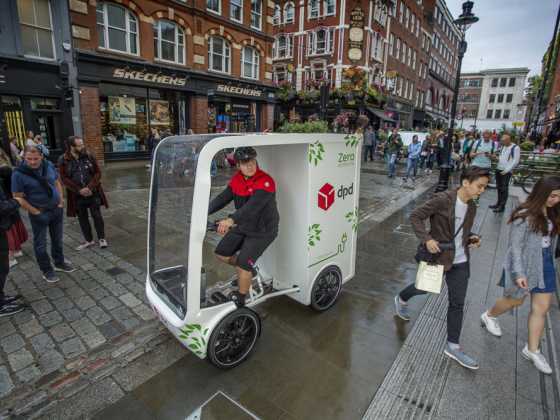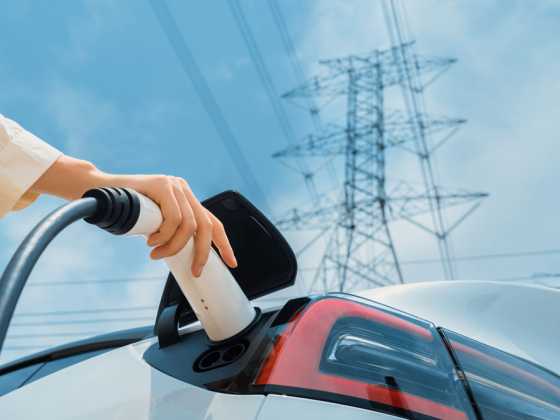A vision for zero emissions

Although the government’s Road to Zero strategy is explicit in being technology neutral and that there will be no bans of any particular technology, it is clear that widespread electrification is the expected solution. Jason Doran and Neil Wallis from the LowCVP delve into the strategy’s aims
The government’s long awaited ‘Road to Zero’ strategy, published in early July, sets out some bold ambitions. Firstly, by 2030, at least half of all new cars (and up to 40 per cent of new vans) to be ultra-low emission.
By 2040, the aim is for the majority of new cars and vans sold to be 100 per cent zero emission – and all new cars and vans to have ‘significant’ zero emission capability.
The final goal is for “almost every car and van to be zero emission” by 2050.
The trajectory signalled by the strategy has been generally welcomed, though critics have called for the pace of change to be stepped up. There should be an opportunity to do this as the government is committed to reviewing progress made by 2025 and to making further interventions if required.
By confirming a vision and targets to 2050, the Road to Zero sets-out how the UK government proposes to meet the legal requirements of the 2008 Climate Change Act under which UK greenhouse gas emissions must be cut by at least 80 per cent of 1990 levels by 2050. As road transport is now the biggest sector source of CO2 and makes up roughly 25 per cent of UK emissions, it is a key area of policy focus.
The Road to Zero supports Defra’s May 2018 ‘Clean Air Strategy’ and builds on last Autumn’s Clean Growth Strategy, and the Industrial Strategy (also published late last year) which aims to “help businesses create better, higher-paying jobs through investment in the skills, industries and infrastructure of the future”.
Technology neutral
Recognising the road transport technology revolution that’s already clearly under way, the Road to Zero does not, however, stipulate the technology required to meet the objectives. Forty‑six policy measures (most of which pre‑date the strategy’s publication) are identified, covering a wide range of technologies and lower emission solutions needed across all aspects of road transport.
New definition for ULEVs
Achieving sub-75 grams of tailpipe CO2 emissions per kilometre is not the challenge it once was when the original ULEV definition was introduced in 2009.
The strategy anticipates that this will be strengthened from 2021: the Road to Zero states that government “expects to define a ULEV as a car or van that emits less than 50 grams of CO2 /km from the tailpipe measured against the relevant test cycle”.
For 2040, the key phrase ‘significant zero emission capability’ is widely anticipated to mean the capability to travel at least 50 miles without producing any of the emissions associated with the use of a traditional internal combustion engine, hopefully mollifying any debates about current (particularly ‘mild’) hybrids being in or out of the 2040 targets.
The commercial vehicle challenge
A section of the strategy is devoted to the significant challenges progressing to a zero‑emission solution for HGVs and road freight transport.
Commercial vehicles are the fastest growing sector of road transport emissions and one of the most difficult to address, so this is welcomed. An initial industry voluntary agreement to reduce GHG emission by 15 per cent by 2025 is supported by measures to look at gas and other low carbon fuels in the near term and accompanied by research to investigate long term zero emissions solutions for the future.
An electric future?
Although the Road to Zero is explicit in being ‘technology neutral’ and that there will be no ‘bans’ of any particular technology, it is clear that widespread electrification is the expected solution. Measures to develop and build electric vehicles, the supply chain and charging systems are prominent, with a commitment to having one of the best EV infrastructure networks in the world. The recent signing into law of the Automated and Electric Vehicles Act gives greater powers to government to ensure a rapid increase in the number of EV charging points at key locations. The Department for Transport says that the new laws will improve consumer confidence in charging by ensuring public charge points are compatible with all vehicles, standardising how they are paid for, their reliability and connectivity.
There are plans to enable a ‘mass market’ roll-out of infrastructure to support electric vehicle adoption. These include a push for charge points to be installed in newly built homes, where appropriate, and in new lampposts.
A new £400 million Charging Infrastructure Investment Fund is intended to help accelerate the roll-out of charging infrastructure by providing funding to new and existing companies that produce and install charge points.
A new £40 million programme to develop and trial innovative, low cost wireless and on-street charging technology is also being created.
The EV home charge scheme will continue until March 2019, with installations becoming ‘smart’ enabled. The scheme provides a grant of up to £500 for electric vehicle owners to install home charge point. There are further incentives and grants, too, for workplaces to install charge points accessible to their employees.
The existing Plug-In Car and Van Grants will be extended to at least October 2018 at current rates, and in some form until at least 2020, to continue to encourage consumer uptake.
Leading by example
The government has committed to ‘doing the right thing’, by making 25 per cent of the central government car fleet ULEVs by 2022 (and all new car purchases ULEVs by default). By 2030, the entire the central government car fleet will be ULEVs.
The Electric Vehicle Energy Taskforce (EVET)
Meeting the anticipated growth in demand for electricity from increasing EV uptake will create unprecedented challenges. The government has set up the ‘Electric Vehicle Energy Taskforce’ – which will be convened by the Low Carbon Vehicle Partnership – to bring together the energy and automotive industries to plan for this.
Consumer communication is key
Motorists are already confused by the options available, so helping them to understand the latest technologies is vital. With the help of the LowCVP, the government is setting up a new ‘Road Transport Emissions Advice Group’ (RTEAG), which brings central and local government, industry and consumer groups together to help ensure clear and consistent consumer messaging, help and advice on technology and fuel choices.
Aimed at consumers, it has also committed to working with industry to improve consumer communications through the Go Ultra Low campaign to at least 2020.
Some of the significant challenges likely to be faced by fleet managers, consumers and drivers were specifically addressed in the LowCVP’s recent Annual Conference – ‘People, Product or Policy – How far can consumers take the drive to zero emissions’.
What about existing vehicles?
Importantly, the strategy also outlines measures to reduce emissions of vehicles already in use. It comments on the need to increase the supply and sustainability of low carbon fuels in the UK through the legally‑binding 15-year strategy to more than double their use, reaching seven per cent of road transport fuel energy by 2032. The government has most recently announced a consultation on the possible introduction of E10 – a 10 per cent ethanol mix in petrol – to the UK.
Plans are confirmed to extend the ‘Clean Vehicle Retrofit Accreditation Scheme’ (CVRAS – for which the criteria were designed by the LowCVP) beyond buses, coaches and HGVs to include vans and black cabs.
Working together
Commenting on the Road to Zero strategy, the Transport Secretary Chris Grayling said: “At the heart of this strategy is a commitment to work in partnership with industry, businesses, academia, environmental groups, devolved administrations, local government, consumers and international partners.”
While the Road to Zero has been criticised by some for an apparent lack of ambition, the details reveal a comprehensive approach embracing a breadth of strategies which, if successfully delivered, will be game-changing. For that it should be applauded. But one thing is very clear: to achieve anything like this level of change in consumer behaviour, collaboration across the entire industry is vital. This is where organisation such as the LowCVP can take a pivotal role. Join the LowCVP and play your part in the Road to Zero transition by joining the LowCVP.






